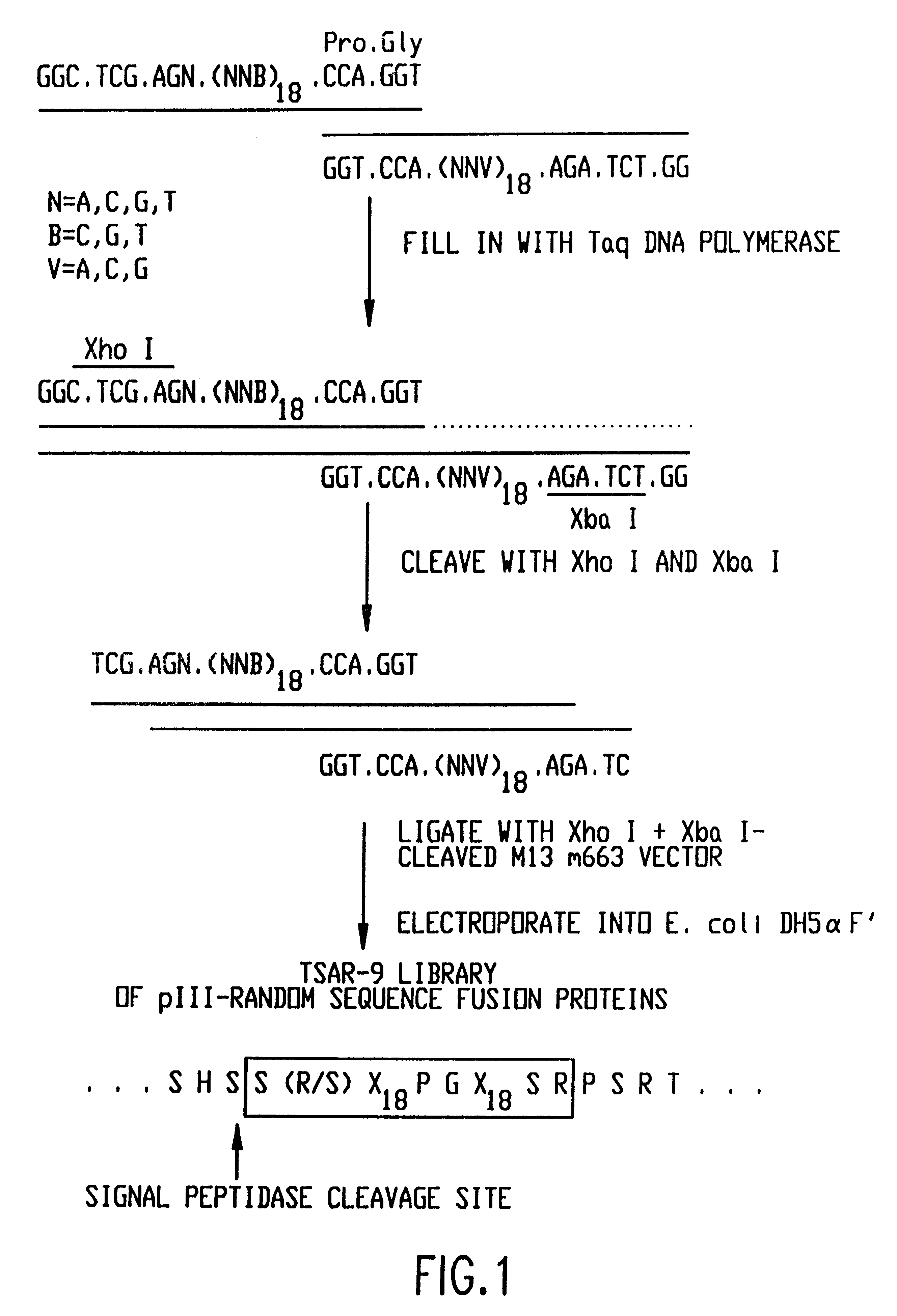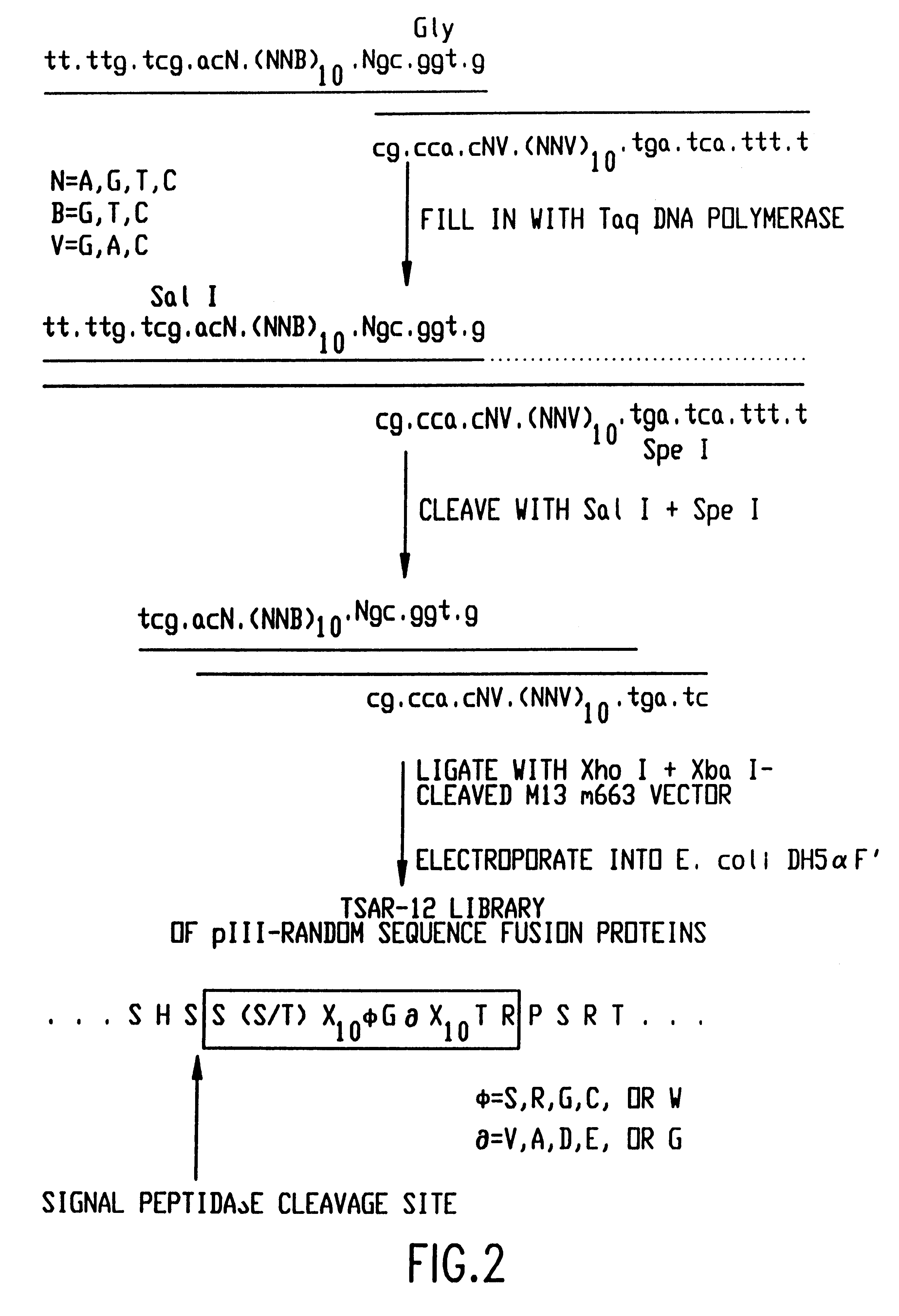Nck SH3 binding peptides
a technology of sh3 domain and binding peptide, which is applied in the field of nck sh3 binding peptides, can solve the problems of inability to build consensus sequences, and inability to identify sh3 domain-binding peptides in the technique disclosed, so as to accelerate the rate of progesterone-induced maturation
- Summary
- Abstract
- Description
- Claims
- Application Information
AI Technical Summary
Benefits of technology
Problems solved by technology
Method used
Image
Examples
Embodiment Construction
5.1. General Considerations
The present invention relates to peptides that exhibit a binding affinity for an SH3 domain, which domain has been found to be present in an number of pysiologically significant proteins. In particular, peptides are disclosed which exhibit general-binding chracteristics to the SH3 domains found in a group of proteins, including but not limited to Abl, Src, Grb2, PLC-.delta., PLC-.gamma., Ras, GAP, Nck, and p85 PI-3' Kinase. Preferred peptides exhibit selective, if not specific, binding affinity for the SH3 domain of Src. As described herein, the peptides of the present invention include a core sequence, preferably a consensus seqeunce, and additional amino acid residues that flank the core sequence.
These peptides, including the methods for their identification, are described in greater detail, below. Thus, in a specific embodiment of the invention, peptides are provided which have at least nine and up to about forty-five amino acid residues, including an a...
PUM
| Property | Measurement | Unit |
|---|---|---|
| dissociation constants | aaaaa | aaaaa |
| pH | aaaaa | aaaaa |
| pH | aaaaa | aaaaa |
Abstract
Description
Claims
Application Information
 Login to View More
Login to View More - R&D
- Intellectual Property
- Life Sciences
- Materials
- Tech Scout
- Unparalleled Data Quality
- Higher Quality Content
- 60% Fewer Hallucinations
Browse by: Latest US Patents, China's latest patents, Technical Efficacy Thesaurus, Application Domain, Technology Topic, Popular Technical Reports.
© 2025 PatSnap. All rights reserved.Legal|Privacy policy|Modern Slavery Act Transparency Statement|Sitemap|About US| Contact US: help@patsnap.com



